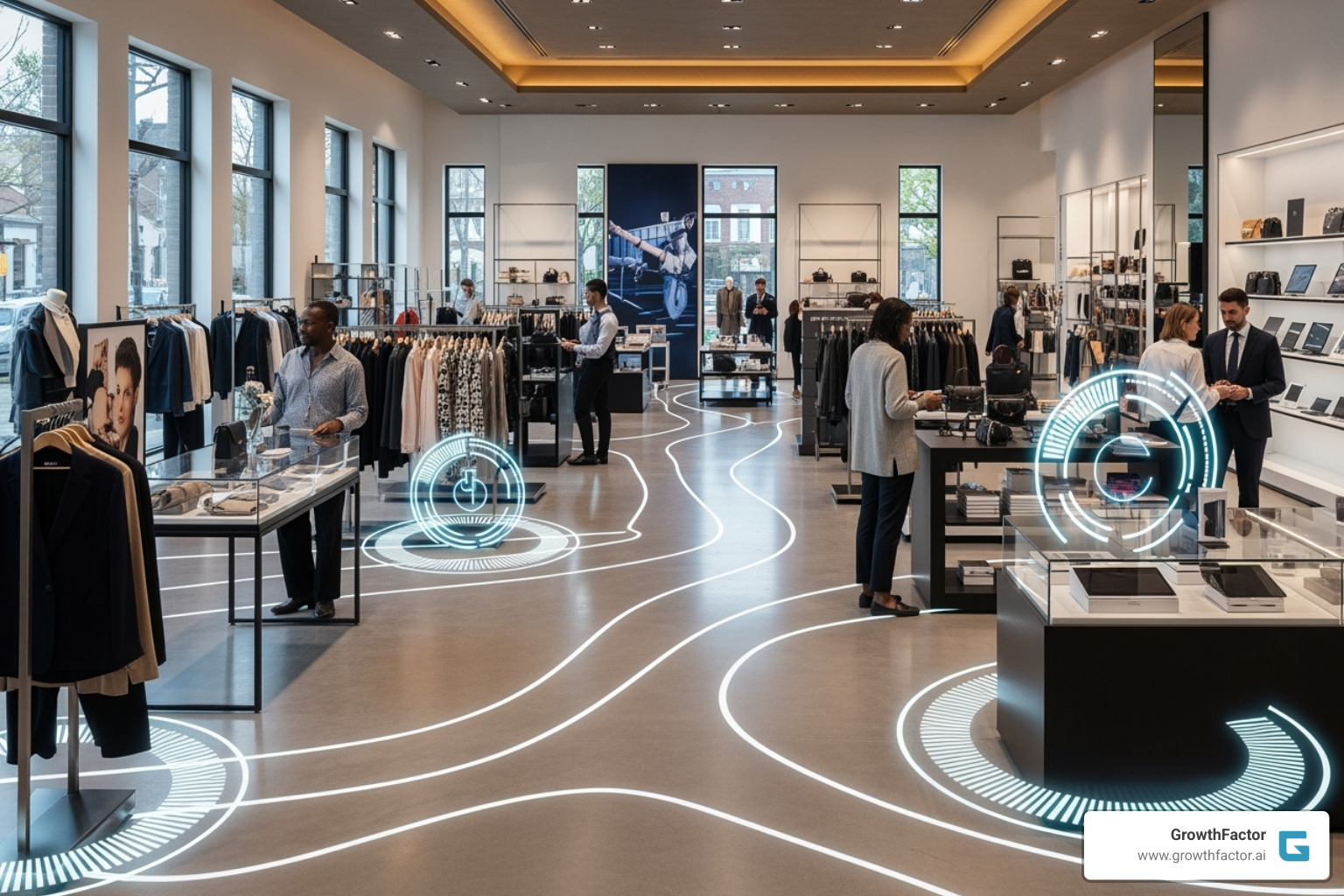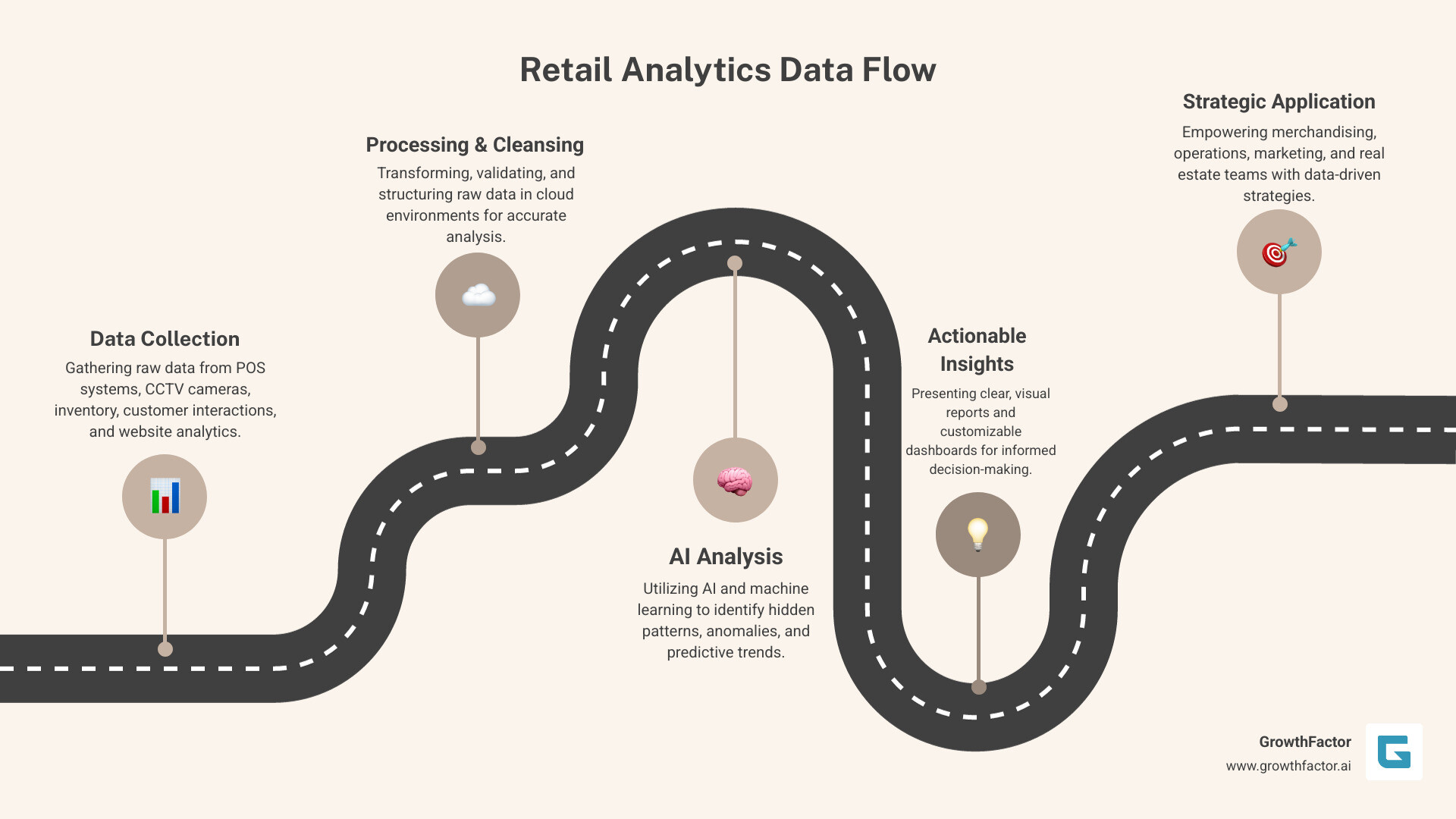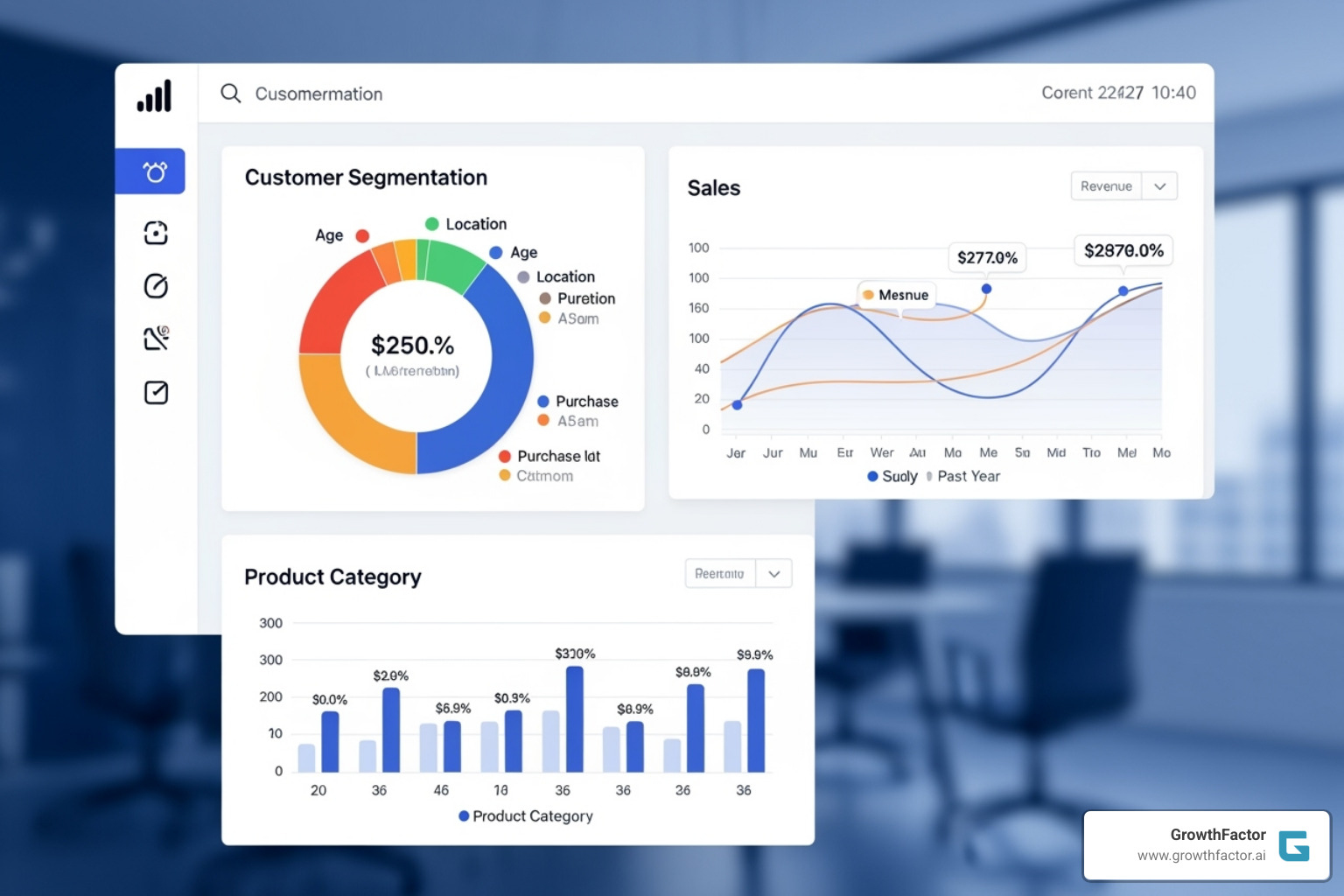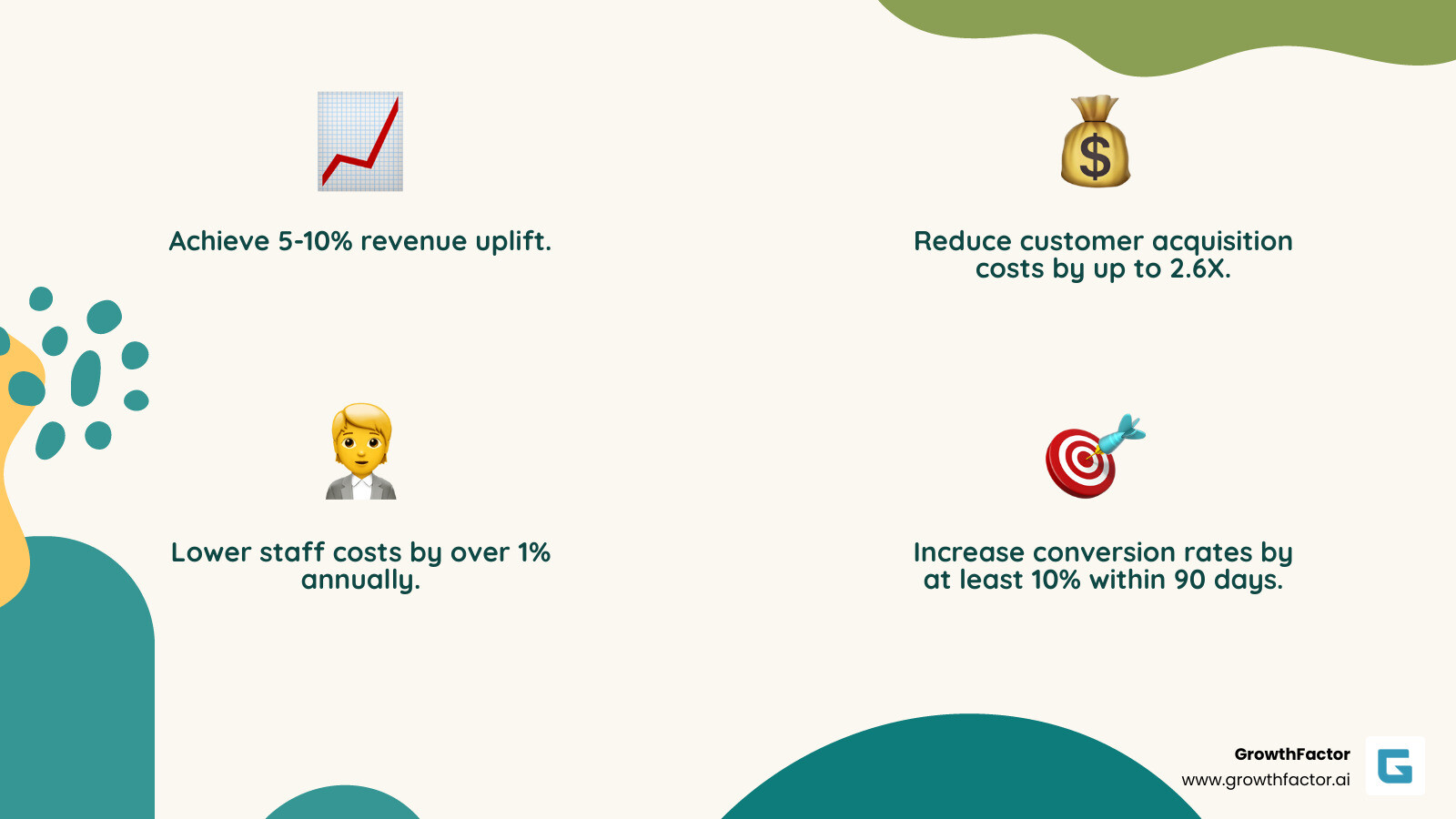The Best Retail Analytics Platforms for Smarter Business
Why Retail Analytics Platforms Are Essential for Modern Businesses

A retail analytics platform is a software solution that collects and analyzes data from retail operations to provide actionable insights. It transforms raw data from POS systems, inventory, customer interactions, and foot traffic into visual reports, helping retailers optimize everything from store layouts to pricing strategies.
Top retail analytics platforms typically include:
- Data Integration: Connects POS systems, CCTV cameras, inventory databases, and customer data
- Real-Time Analytics: Provides live insights into sales, foot traffic, and customer behavior
- AI-Powered Insights: Uses machine learning to identify patterns and predict trends
- Customizable Dashboards: Offers role-specific views for merchants, operations, and marketing teams
- Mobile Access: Enables decision-making from anywhere with responsive design
- Security Compliance: Maintains SOC 2 Type II certification and GDPR compliance
The need for these platforms has never been greater. As one retail executive noted: "Success in retail isn't guesswork; it’s a balance of knowing your competitors, your numbers, and your shoppers." With 95% of retailers having access to analytics data but many struggling to turn it into action, the right platform can be transformative.
Modern retail moves fast, with shifting customer expectations and tight margins. The retailers winning today are those who can quickly spot trends, optimize operations, and make data-backed decisions across their business.
I'm Clyde Christian Anderson, Founder and CEO of GrowthFactor.ai. We've helped retail clients open up $1.6M in cash flow and $6.5M in revenue through AI-powered site selection—a key capability of modern retail analytics platforms. With a background in retail operations and investment banking, I've seen how the right analytics tools accelerate growth while reducing risk.

Similar topics to Retail analytics platform:
What is a Retail Analytics Platform and Why is it Essential?
A retail analytics platform acts as the central nervous system for your retail operation, collecting data from every corner of your business—POS systems, inventory, security cameras, web traffic, and social media. The platform transforms this scattered information into clear, actionable insights for daily decision-making.
Data collection includes real-time monitoring for what's happening now and historical analysis to reveal long-term patterns. Both are essential for a complete business picture.
Modern retail analytics measures consumer behavior with incredible precision, showing how customers move through stores and what drives them to buy. Meanwhile, sales performance analysis goes beyond revenue to show which products and strategies drive results.
This insight creates a genuine competitive edge. While others guess, you make decisions based on solid data, leading to increased profitability through smarter inventory, pricing, and marketing. Most importantly, this data helps you create an improved customer experience, building loyalty and keeping people coming back.

Understanding Customer Behavior and Preferences
A retail analytics platform shows you what customers do, not just what they say.
- Foot traffic patterns reveal how people shop, showing preferred entrances and high-traffic zones. This is invaluable for optimizing store layouts and product placement.
- Purchasing patterns identify product bundles, peak conversion times, and seasonal sales trends, informing inventory planning and staff scheduling.
- Customer segmentation allows for sophisticated profiling based on behavior, creating detailed personas like "weekend premium buyers" or "weekday convenience shoppers."
- Dwell time analysis measures time spent in specific store areas. High dwell time with low conversion can signal customer confusion, while low dwell time may indicate poor product visibility.
- Cross-shopping data provides competitive intelligence by showing where else your customers shop, helping identify market share and opportunities for product expansion.
- Sentiment analysis gauges customer feelings from reviews and social media, adding emotional context to behavioral data.
For retailers looking to dive deeper into movement patterns, Foot Traffic Analytics provides comprehensive insights.
The Four Types of Retail Analytics
Understanding the four types of retail analytics provides a roadmap for your data journey.
- Descriptive analytics answers what happened? It includes standard reports like daily sales, inventory levels, and customer counts. This foundational data is crucial for tracking performance.
- Diagnostic analytics answers why it happened? It connects data points to explain performance shifts, such as a sales drop being linked to a competitor's promotion or supply chain issues.
- Predictive analytics answers what will happen? It uses historical data and statistical models to forecast demand, inventory needs, and market trends, enabling proactive planning like optimizing seasonal stock. This is essential for effective Retail Demand Forecasting.
- Prescriptive analytics answers what should we do? This advanced level recommends specific actions, such as optimal pricing strategies, inventory reorder points, or ideal new store locations, to achieve business goals.
The real power comes from using all four types together. This complete cycle transforms data from a reporting tool into a strategic advantage that drives real business results.
Key Features of a Winning Retail Analytics Platform
A comprehensive retail analytics platform unifies disparate data into an actionable whole, serving as a powerful engine for informed decision-making. It must be more than a collection of reports; it must be an intuitive tool that drives strategy.
At its core, a winning platform provides a centralized data hub, ensuring everyone works from a single source of truth. The interface must be user-friendly, allowing teams to explore data without extensive technical training. Customizable dashboards are paramount, enabling each role to see relevant metrics. These dashboards should offer real-time reporting for an immediate pulse on performance. Mobile accessibility is non-negotiable, allowing for decisions on the go. Underpinning all these features is robust data security, such as SOC 2 Type II compliance, to protect sensitive data.
Core Functionalities for a comprehensive retail analytics platform
A top-tier retail analytics platform offers a suite of functionalities to optimize your business:
- Sales and Performance Tracking: Provides detailed insights into sales trends by product, category, and region, tracking key metrics like conversion rates and average transaction value.
- Inventory Management Tools: Helps maintain optimal stock levels through demand forecasting and automated replenishment, reducing waste and preventing stockouts. AI can even determine ideal size ratios by analyzing true demand.
- Customer Behavior Analysis: Includes foot traffic analysis, dwell time, and customer segmentation to help personalize experiences and optimize store layouts.
- Marketing Campaign Optimization: Tracks marketing ROI, identifies which campaigns drive traffic and sales, and enables custom promotions.
- Staffing and Labor Optimization: Uses foot traffic and sales data to optimize staff schedules, ensuring proper coverage and reducing labor costs by over 1% annually.
- Competitive Analysis: Monitors competitor pricing and promotions, often with automated web scraping to save manual effort and inform pricing strategies.
- Strategic Location Planning: Provides data-driven insights into demographics, psychographics, and competitor presence to identify optimal new store locations, a key area of our expertise in Store Location Strategy.
Integration and Data Management
A retail analytics platform is only as powerful as its data. Seamless integration with existing systems is critical, including:
- Point-of-Sale (POS) systems for transaction data.
- CCTV cameras and sensors for in-store foot traffic and heat maps.
- Customer Relationship Management (CRM) systems for customer profiles.
- Enterprise Resource Planning (ERP) systems for operational data.
- E-commerce platforms to unify online and offline journeys.
Effective data cleansing and validation are also paramount. The platform must clean, normalize, and structure data from diverse sources to ensure accuracy. Modern platforms offer flexible API access and cloud data warehouse connectivity, enabling analysis of massive datasets in seconds. This scalability is essential for innovative organizations incorporating cloud technologies to get a 360-degree view of their business.
How AI and Machine Learning Revolutionize Retail Insights
The real breakthrough in modern retail analytics platforms comes from artificial intelligence (AI) and machine learning. These technologies move beyond historical reporting to explain why customers behave as they do and predict what's next.
AI shines at automating data analysis, processing massive amounts of information in seconds. It delivers AI-detected insights by identifying hidden patterns and anomalies that human analysts might miss. For example, AI might find a correlation between organic produce purchases and premium skincare, reshaping your merchandising strategy.
Predictive forecasting powered by machine learning takes the guesswork out of planning by learning from historical data, trends, and external factors to forecast demand with remarkable accuracy. The future is moving toward systems that think alongside us, not just report to us. To explore how these technologies are reshaping the industry, check out our guide on AI-Powered Retail Analytics.
Optimizing Inventory, Pricing, and Supply Chain
AI transforms three pillars of retail profitability: inventory, pricing, and supply chain.
- AI for demand forecasting analyzes numerous variables—sales history, seasonality, weather, local events—to improve accuracy. This precision helps avoid overstocking and stockouts. One of our clients reduced waste by 23% while improving availability through AI-driven optimization.
- Dynamic pricing strategies use machine learning to adjust prices in real-time based on demand, competitor actions, and inventory levels, replacing quarterly reviews with continuous optimization.
- Supply chain disruption alerts provide early warnings by analyzing shipping data, supplier performance, and geopolitical events. This foresight allows for proactive adjustments, like sourcing from alternative suppliers.
This technology also optimizes product placement and assortment by analyzing performance in specific store locations. These insights, combined with strategic location planning covered in Data-Driven Site Selection, create a comprehensive approach to retail optimization.
Enhancing Site Selection and Expansion Planning
AI transforms site selection from an art into a science. Traditional methods relied on intuition and limited data, but AI allows for a far more comprehensive analysis.
Our AI Agent Waldo enables teams to evaluate five times more sites efficiently by automating screening and qualification. Instead of manually researching dozens of locations, Waldo analyzes hundreds of sites simultaneously, ranking them based on key success factors.
Identifying top locations for expansion involves analyzing layers of data that would take human analysts weeks to process. AI examines demographic and psychographic profiles, traffic patterns, and competitor density.
One of the biggest risks in expansion is minimizing cannibalization. AI mapping tools analyze true trade areas and customer travel patterns to identify the sweet spot where a new location will capture fresh market share.
Demographic and psychographic analysis goes beyond population counts to identify neighborhoods where residents match your ideal customer profile, ensuring new stores are positioned for long-term success.
Our expertise in Retail Site Selection Software and Retail Expansion Planning Software combines these AI capabilities with real-world experience, helping businesses expand with confidence.
Opening up Value Across Your Organization
The power of a retail analytics platform lies in its ability to break down data silos and empower the entire organization. It puts insights directly into the hands of the people who need them, from merchandisers to store managers.
This democratization of data creates a data culture, where decisions are backed by evidence rather than gut feelings. Retailers who successfully implement comprehensive analytics typically see a potential for 5-10% revenue uplift as the entire organization starts making smarter, faster decisions.

Benefits for Different Retail Roles
A well-designed retail analytics platform addresses the specific pain points of each team.
- Merchants and Planners gain visibility into real-time sales and stock levels. This enables better assortment decisions and smarter inventory management, such as using true demand data to determine optimal size ratios for buys.
- Brand Managers get clear insights into campaign ROI and customer loyalty. They can track promotion performance, adjust offers based on behavior, and see which campaigns drive new traffic, making marketing budgets more effective.
- Operations Managers use data for staff efficiency and store performance. Real-time foot traffic data helps optimize schedules, ensuring coverage during peak hours and reducing labor costs by over 1% annually.
- Real Estate Teams use analytics for site viability and market analysis. Our AI Agent Waldo helps teams evaluate five times more locations efficiently, identifying top expansion opportunities while minimizing cannibalization. This data-driven approach to Retail Location Analysis transforms site selection into a science.
Real-World Success and ROI
The investment in a retail analytics platform consistently delivers impressive returns.
| Metric | Potential Impact |
|---|---|
| Revenue Uplift | 5-10% |
| Customer Acquisition Cost Reduction | Up to 2.6X |
| Staff Cost Reduction | Over 1% annually |
| Report Automation Savings | 2.5 hours/week per supplier |
| Conversion Rate Increase | At least 10% within 90 days |
| Savings on Store Concepts | Potential for $100K |
| On-Premises Ad Revenue Uplift | 80% |

Real-world examples highlight the impact. One retailer achieved its most successful Black Friday using competitor and performance data. Another automated competitor price scraping, saving hours of manual work per country. Floor & Decor improved its customer transfer model by 80%, leading to more accurate revenue forecasts.
Fashion retailer Samsøe Samsøe used demographic insights to shift its inventory gender ratio, aligning with its actual customer base. Even during the pandemic, Canadian Tire boosted sales by 20% while closing 40% of its stores, powered by agile, data-driven decisions. As TCC Wireless finded, the right analytics platform provides complete business clarity. You can read a case study on data analytics adoption to see how transformative this can be.
These examples prove a retail analytics platform is a strategic investment that pays dividends across every part of your operation.
Frequently Asked Questions about Retail Analytics Platforms
When exploring retail analytics platforms, businesses often have similar questions about implementation, security, and value. Here are the most common concerns we hear.
What is the main purpose of retail analytics?
The main purpose of a retail analytics platform is to replace guesswork with data-driven insights. It collects and analyzes data from all retail operations to help you understand customers, optimize inventory, improve marketing ROI, and make smarter decisions—from product assortment to new store locations. It helps answer what's happening, why, and what you should do about it.
How long does it take to implement a retail analytics platform?
Implementation timelines vary. Cloud-based solutions with pre-built connectors can be up and running in a few weeks. Custom implementations with complex integrations or poor data quality can take several months. Key factors include the number of data sources, data cleanliness, and the need for custom dashboards. Team training should also be factored into the timeline.
How do analytics platforms ensure data privacy and security?
Top platforms prioritize data security through multiple layers of protection. They typically hold SOC 2 Type II certification and comply with regulations like GDPR. Key security measures include data anonymization to protect customer identities, end-to-end encryption, and fine-grained access controls that limit data visibility based on user roles. Many platforms are built with a "privacy by design" approach, ensuring security is a core component, not an afterthought.
Conclusion: Making the Right Choice for Your Business
Choosing the right retail analytics platform is a transformative business decision. These platforms turn vast amounts of data into the clear, actionable insights that drive real results.
The results are clear: retailers see 5-10% revenue uplifts, reduce customer acquisition costs up to 2.6X, and save over 1% annually on staff. More importantly, they shift from guesswork to confident, data-backed strategies.
AI-driven insights are reshaping every corner of retail. From predicting product demand to identifying the perfect spot for your next store, AI makes complex decisions simpler and more accurate, giving you the agility to respond to market changes instantly.
The real magic happens when you empower your entire organization with accessible data. It's not about replacing human judgment—it's about giving that judgment the best possible foundation.
Choosing a platform that aligns with your specific goals is crucial. Whether you're focused on merchandising, marketing, or strategic expansion through Retail Site Location Analysis, the right platform should feel like a natural extension of your team.
At GrowthFactor, we've seen AI-powered analytics transform retail real estate decisions, helping clients open $1.6M in cash flow and $6.5M in revenue. Our AI Agent Waldo enables teams to evaluate five times more sites efficiently, proving the future of retail is about working smarter.
We offer flexible solutions to match your ambitions—from our Core plan at $500 to our Growth plan at $1,500 and Enterprise options. Because it's not about the size of your budget; it's about making every decision count.
The retail landscape moves fast. With the right retail analytics platform, you can stop guessing and start knowing what will drive success.
Take the next step in your site selection strategy and find how intelligent analytics can transform your business decisions from good guesses into winning strategies.
Citations
The human algorithm
Request a live demo
Schedule meeting
Or submit your information below and we'll be in touch to schedule.



